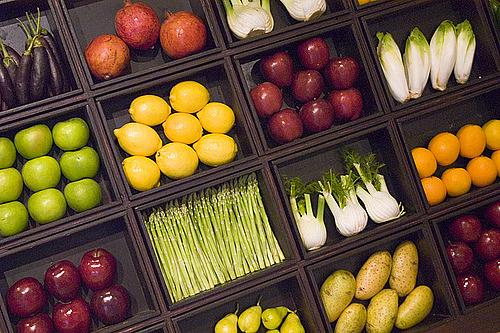Is L.A. Schools' Healthy Lunch Program Really a "Flop"?

Lisa Aliferis is the editor of the new "State of Health" blog from KQED News, San Francisco's NPR affiliate. The blog focuses on public health and health policy across California. Starting in January, "State of Health" will be updated daily. This post appeared December 21, 2011.
The Los Angeles Times featured a lengthy piece last weekend on L.A. Unified School District's apparent failure in its much-touted school lunch program, which had been overhauled to be more healthful.
Early in the school year, the Times reports, L.A. Unified "got rid of chocolate and strawberry milk, chicken nuggets, corn dogs, nachos and other food high in fat, sugar and sodium." With roughly 30 percent of school age children now overweight or obese, striking such unhealthy food from school lunches seems like a good place to start to coax kids to eat a healthier diet.
But the Times claims the change has been a "flop" for many students. Stories of a black-market for junk food on certain campuses are reported, including kids sneaking in "Flamin' Hot Cheetos" and soda. And the school lunches themselves?
Many of the meals are being rejected en masse. Participation in the school lunch program has dropped by thousands of students. Principals report massive waste, with unopened milk cartons and uneaten entrees being thrown away. Students are ditching lunch, and some say they're suffering from headaches, stomach pains and even anemia. At many campuses, an underground market for chips, candy, fast-food burgers and other taboo fare is thriving.
And that's the way the story has been circulating--healthy school lunches are a failure. Mother Jones excerpted the story under the headline "Kids Just Want to Have Junk Food." Slate goes further and blames not children, but "the snotty little brat factor," kids who will turn their nose up at anything new.
But, wait a minute here. It's not until we're halfway through the article that we get to some actual numbers. The Times says participation at the start of the year dropped 13 percent.
Hmmm, down 13 percent, a "flop"? L.A. Unified Food Services Director admits the debut of the program was a "disaster," and the District has since resolved some bureaucratic problems.
Then the Times gets to the far less sexy headline: "In the last month or so, the overall program has begun to recover; participation is down by about 5% or 6%, Barrett said."
So, today, 94 percent of formerly participating children have stayed with the program. Before the District swapped out the menu, it held taste tests at its centralized kitchens and comments were overwhelmingly positive. Today, many of the new menu items such as vegetable tamales and salads are popular. The question, it seems, is real-world, on-site implementation. There's a difference between a taste test in a controlled environment and actually serving the meals day in and day out at multiple campuses. Students reported undercooked meat, soggy noodles and hard rice.
Bonnie Christensen is the Executive Chef of the lauded Berkeley Unified School District lunch initiative. Berkeley revamped its menu six years ago to focus on locally grown food and generally make school lunches more health. The district has received national awards for its accomplishments. But the early days were a challenge. Each school site is different, with different staff and different equipment. Staff training is key.
"The problem with food is there's always a variable. The broccoli doesn't grow the same way if there's a frost," Christensen explained. "In foods, the problems translate immediately. If you didn't have enough people at work that day, you have to take shortcuts to get the work done. Processed food gives you consistency, fresh made from scratch is less consistent. The way to make it consistent is training staff and having better equipment."
Bettina Elias Siegel blogs about school food reform on "The Lunch Tray" and wrote a post about the Times article. She, too, picked up on the quality control problems L.A. Unified is having and that "over- or undercooked food is of course going to be rejected by school kids, as it would be by anyone."
L.A. Unified has pledged to tinker with its menu. But Siegel asks a provocative question in her post: what if the five to six percent of children who have abandoned the program never come back and continue to make junk food their primary diet?
I know this might sound terribly callous, but I'm not sure I care. Because the hard truth is this: if we really intend to wean an entire generation of children off school food "carnival fare" (nachos, nuggets, burgers and fries) and introduce them to fresher, healthier entrees, we are, without question, going to lose some kids along the way. In other words, it's just not that surprising if a middle- or high schooler who's seen nothing but "better-for-you junk food" on his tray since kindergarten can't make the leap to black bean burgers and salad, especially if there's no context for healthier foods in his life outside of school.
But a kindergartener who's never seen anything but black bean burgers and salads in the cafeteria is going to be a much easier sell on healthier foods throughout his school years. And that young child is our only hope if we're going to reverse current trends in obesity and poor lifestyle habits among our nation's children.
(Photo "Fruit & Vegetable Box" by Ali Karimian on Flickr Creative Commons)

